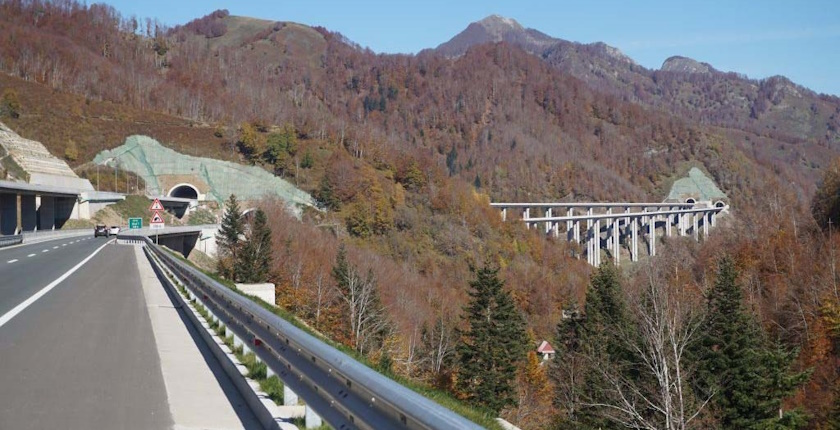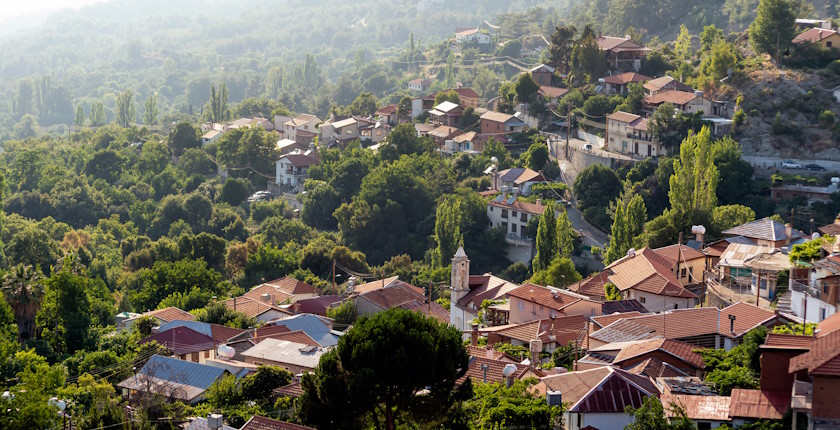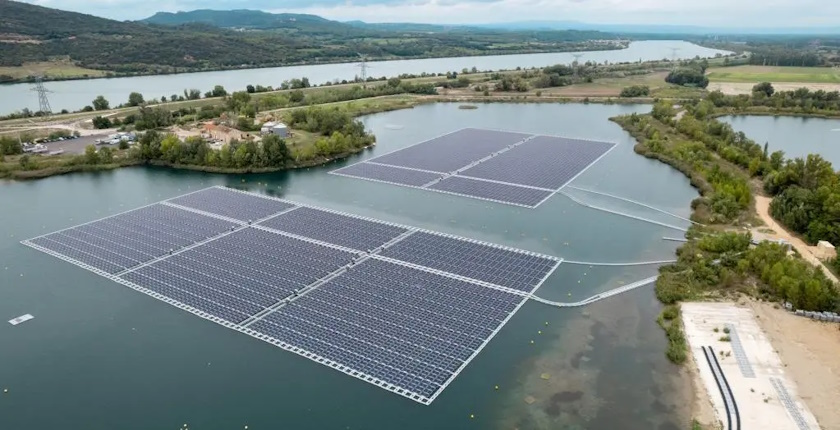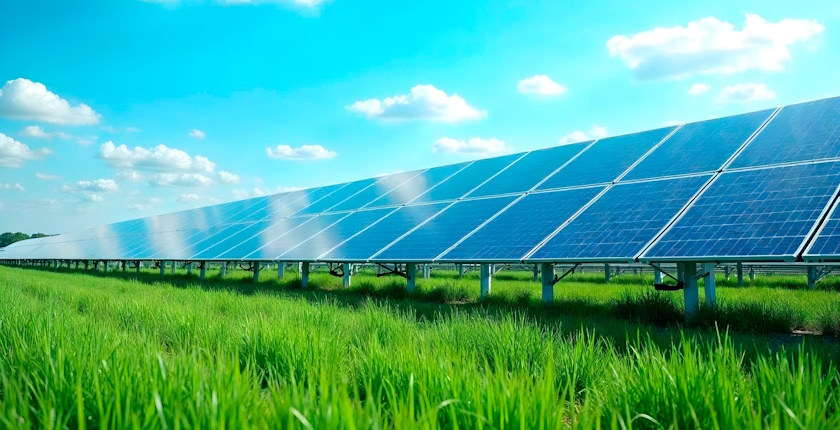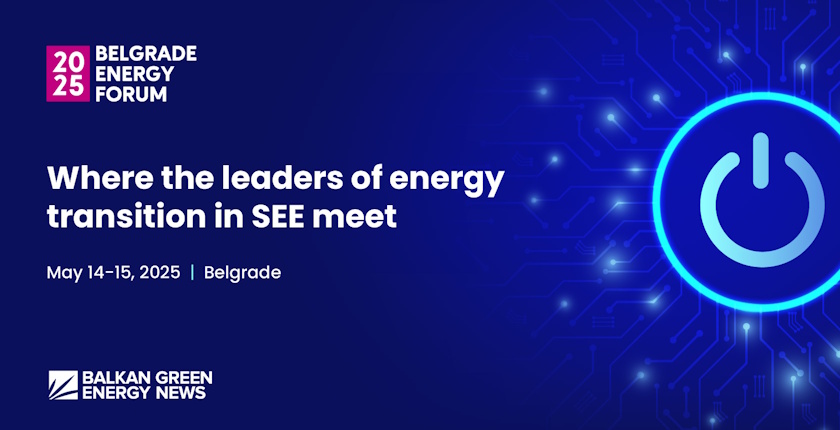
Belgrade Energy Forum 2025 – where the leaders of energy transition in SEE meet (May 14-15)
The third Belgrade Energy Forum will take place on May 14 and 15, bringing together key players in Southeast Europe’s energy transition. Organized by Balkan Green Energy News, the region’s leading energy news portal, this conference will serve as a hub for representatives from regional and international institutions, organizations, and the business community from the region, Europe, and beyond.
Given the current geopolitical landscape, engaging in dialogue and networking with those who have a deep understanding of the markets and trends is more important than ever. To achieve the region’s energy and climate goals, it is essential to exchange information, knowledge, and experiences. Don’t miss this exceptional opportunity to connect with industry leaders and collectively shape the energy landscape!
The Belgrade Energy Forum is a regional energy conference organized by Balkan Green Energy News, the leading energy portal in Southeast Europe and one of the top 50 energy news websites in 2025.
In 2023 and 2024, the Belgrade Energy Forum attracted nearly 1,000 participants from over 30 countries. This included five energy ministers from the Southeast Europe region and more than 120 prominent speakers on energy transition from Europe and beyond
Petar Đokić, Minister of Energy and Mining of the Republic of Srpska, Dubravka Đedović Handanović, Minister of Mining and Energy of Serbia, and Saša Mujović, Minister of Energy of Montenegro, at the opening of Belgrade Energy Forum 2024
The diverse conference agenda includes eight panel discussions, keynote speeches, and presentations. The conference, taking place at Belgrade’s Crowne Plaza Hotel (special accommodation rates are available at the hotel by April 1 and the nearby Hyatt Regency), will feature an exhibition floor with stands.
At the end of day one, European wind turbine manufacturer Nordex, the silver sponsor of Belgrade Energy Forum 2025 (BEF 2025), will host a large party for conference participants to celebrate its 40th anniversary.
This year’s conference will introduce a networking and meeting-scheduling app, which will be launched soon. The conference director, Branislava Jovičić, stated:
“In addition to our well-recognized quality program, the Belgrade Energy Forum also acts as an excellent networking platform for individuals already conducting business in the region, as well as those planning to enter the market. To achieve your business goals more effectively, it’s essential to understand your stakeholders, and that’s exactly what we offer as a news portal and conference organizer. We provide our partners from the region and around the world the opportunity to connect with key stakeholders in one place. Furthermore, Balkan Green Energy News is available year-round to our clients and partners, supporting their business and helping them share news about their achievements. This is our competitive advantage over other events.”
The list of confirmed speakers includes a number of key players in the region’s energy transition, with several important names standing out.
Keynote speeches by energy transition leaders
Borislav Kostadinov, Fund Director for the Green for Growth Fund (GGF) at Finance in Motion, will talk about the importance of the energy transition and the financing of green projects. The GGF is one of the world’s most significant climate action funds in developing markets, including 19 markets in the European Union (EU) neighborhood, with a significant role in the Western Balkans.
Borislav Kostadinov, Fund Director for the Green for Growth Fund (GGF) at Finance in Motion, addresses BEF 2024
Christian Zinglersen, Director of the EU Agency for the Cooperation of Energy Regulators (ACER), will address the conference on May 14. His participation in BEF 2025 comes at a critical time for the Energy Community contracting parties, the transposition of EU energy regulations into national laws, and the integration into the EU’s single market.
Traditional support from institutional partners
The traditional institutional partners of BEF 2025 are the Ministry of Mining and Energy of the Republic of Serbia, the Ministry of Energy and Mining of the Republic of Srpska, the Serbian Chamber of Commerce, and Confindustria Serbia.
Petar Đokić, Minister of Energy and Mining of the Republic of Srpska, has stated that the ministry’s role as an institutional partner reflects its commitment to promoting energy sustainability, improving regional cooperation, and attracting investments in the energy sector.
“The Ministry of Energy and Mining of the Republic of Srpska, along with my personal involvement, has been actively engaged in the Belgrade Energy Forum since its inception. This Forum brings together key stakeholders in the energy sector, serving as a platform that encourages the exchange of ideas and experiences. The insights gained from these discussions help identify practical solutions to the energy industry’s challenges,” Đokić stressed.
He is convinced that through our collective efforts, we can build an energy future that is economically stable, environmentally sustainable, and socially responsible.
Last year’s panel titled Accelerating battery storage in South Eastern Europe: Challenges, Solutions, Outlook
Golden support for BEF from Serbia’s auction winner
A pioneer in renewable energy development in Southeast Europe, the Netherlands-based WV International is the gold sponsor of the conference. Recently, the company ranked second and third in Serbia’s second auction for market premiums for renewables, bidding with wind farm projects Alibunar 1 and Alibunar 2, which SANY Renewable Energy then acquired. This Chinese company, which manufactures wind turbines, is participating in this year’s BEF for the first time and will have an exhibition stand.
Neda Lazendić, WV International’s Country Manager for Serbia, said: “It is our great pleasure to support Belgrade Energy Forum for the third consecutive year as the largest and most important energy conference in our region. Following recent auction wins, WV International continues to work on developing a 571 MW portfolio, and we are also developing a 125 MW hybrid power plant that will combine wind and solar.”
Nordex Group, Adex Group, and the Green for Growth Fund (GGF) are the conference’s silver sponsors. Other sponsors will be announced soon.
Nordex Group, a European manufacturer of wind turbines, celebrates its 40th anniversary this year. In 2016, Germany-based Nordex merged with Spain’s Acciona Windpower. In this region, the silver sponsor of the conference shines with a golden glow, recording outstanding results – its current portfolio includes 1,000 MW of wind farms already generating electricity in Serbia and Croatia as well as projects under development in the two countries. Recently, the company signed an agreement on the Gvozd wind farm, which is being developed by Montenegro’s state power utility Elektroprivreda Crne Gore (EPCG).
Ibrahim Özarslan: Nordex has a strategic interest in the Balkans
Ibrahim Özarslan, CEO of Nordex Group’s Division Europe, said at the signing of the agreement with EPCG that Nordex had a strategic interest in the Balkans.
Adex – the first regional electricity exchange
Adex Group sponsors the panel titled Integration of Western Balkans electricity markets into internal European market through market coupling. In December last year, Adex Group completed a merger with the Hungarian Power Exchange (HUPX). In this way, HUPX joined the Slovenian BSP exchange and Serbia’s SEEPEX, forming a Central, Eastern, and Southeastern European hub.
The company said at the time that the transaction positioned it as the premier power trading hub for Central and Eastern Europe and Southeastern Europe.
GGF – a key financial link in the Western Balkans
The Green for Growth Fund (GGF) is a financial link without which many regional renewable energy projects would not have been realized. These include the Bogoslovec wind farm in North Macedonia, which was put into operation last year. GGF said at the time that Bogoslovec was its first equity investment and a model for future renewable energy projects.
The fund, also known for cooperating with commercial banks in the region, recently approved additional funds for Montenegro’s Lovćen banka and Serbia’s AIK Banka.
For the first time, Switzerland-based Pexapark, a leading provider of price data, market intelligence, and advisory services for renewable energy, will attend the conference in the capacity of the conference Knowledge partner.
Friends of the conference are Elektroprivreda Srbije and Energy Institute Hrvoje Požar
Friends of the conference are Serbia’s state power utility Elektroprivreda Srbije (EPS) and Croatia’s Energy Institute Hrvoje Požar, with their respective directors, Dušan Živković and Dražen Jakšić, taking part together in the panel on decarbonizing the region’s electricity sector.
Energy Institute Hrvoje Požar (EIHP), a leading energy think-tank in the region, continues to provide much-needed logistics for the energy transition across the Balkans and Europe. The institute has developed a biodiversity conflict map for solar and wind power plants in Croatia. The map represents a crucial tool for balancing the energy transition and nature conservation, and it also serves as an example for the innovative application of digital technologies to support sustainable development.
In addition to providing consultancy services, EIHP has also strived to lead by example. In October 2024, it officially opened its National Training Center for Nearly Zero Energy Buildings (nZEB). This marked the completion of a project of the same name, which included the first phase of renovating EIHP’s office building to meet nearly zero energy standards.
Belgrade Energy Forum provides an excellent networking opportunity. Register and connect with the leaders of the energy transition in Southeast Europe.
Get ready for eight great panel discussions:
- High-level ministerial panel on SEE regional cooperation and energy transition strategies
- Decarbonization strategies for power generation in Southeast Europe 2040/2050
- Addressing carbon pricing in the Western Balkans – Turning decarbonization challenges into opportunities through collaboration, innovation, and competitiveness
- Integration of Western Balkans electricity markets into the internal European market through market coupling
- Transformative power of digitalisation and AI in the energy sector
- Energy storage system market in SEE: trends and forecasts
- PPAs as a key to renewable energy growth in SEE
- Energy system flexibility – vital role in ensuring a stable, efficient, and sustainable power grid
The third Belgrade Energy Forum will take place on May 14 and 15, bringing together key players in Southeast Europe’s energy transition. Organized by Balkan Green Energy News, the region’s leading energy news portal, this conference will serve as a hub for representatives from regional and international institutions, organizations, and the business community from the region, Europe, and beyond.
Given the current geopolitical landscape, engaging in dialogue and networking with those who have a deep understanding of the markets and trends is more important than ever. To achieve the region’s energy and climate goals, it is essential to exchange information, knowledge, and experiences. Don’t miss this exceptional opportunity to connect with industry leaders and collectively shape the energy landscape!
The Belgrade Energy Forum is a regional energy conference organized by Balkan Green Energy News, the leading energy portal in Southeast Europe and one of the top 50 energy news websites in 2025.
In 2023 and 2024, the Belgrade Energy Forum attracted nearly 1,000 participants from over 30 countries. This included five energy ministers from the Southeast Europe region and more than 120 prominent speakers on energy transition from Europe and beyond
Petar Đokić, Minister of Energy and Mining of the Republic of Srpska, Dubravka Đedović Handanović, Minister of Mining and Energy of Serbia, and Saša Mujović, Minister of Energy of Montenegro, at the opening of Belgrade Energy Forum 2024
The diverse conference agenda includes eight panel discussions, keynote speeches, and presentations. The conference, taking place at Belgrade’s Crowne Plaza Hotel (special accommodation rates are available at the hotel by April 1 and the nearby Hyatt Regency), will feature an exhibition floor with stands.
At the end of day one, European wind turbine manufacturer Nordex, the silver sponsor of Belgrade Energy Forum 2025 (BEF 2025), will host a large party for conference participants to celebrate its 40th anniversary.
This year’s conference will introduce a networking and meeting-scheduling app, which will be launched soon. The conference director, Branislava Jovičić, stated:
“In addition to our well-recognized quality program, the Belgrade Energy Forum also acts as an excellent networking platform for individuals already conducting business in the region, as well as those planning to enter the market. To achieve your business goals more effectively, it’s essential to understand your stakeholders, and that’s exactly what we offer as a news portal and conference organizer. We provide our partners from the region and around the world the opportunity to connect with key stakeholders in one place. Furthermore, Balkan Green Energy News is available year-round to our clients and partners, supporting their business and helping them share news about their achievements. This is our competitive advantage over other events.”
The list of confirmed speakers includes a number of key players in the region’s energy transition, with several important names standing out.
Keynote speeches by energy transition leaders
Borislav Kostadinov, Fund Director for the Green for Growth Fund (GGF) at Finance in Motion, will talk about the importance of the energy transition and the financing of green projects. The GGF is one of the world’s most significant climate action funds in developing markets, including 19 markets in the European Union (EU) neighborhood, with a significant role in the Western Balkans.
Borislav Kostadinov, Fund Director for the Green for Growth Fund (GGF) at Finance in Motion, addresses BEF 2024
Christian Zinglersen, Director of the EU Agency for the Cooperation of Energy Regulators (ACER), will address the conference on May 14. His participation in BEF 2025 comes at a critical time for the Energy Community contracting parties, the transposition of EU energy regulations into national laws, and the integration into the EU’s single market.
Traditional support from institutional partners
The traditional institutional partners of BEF 2025 are the Ministry of Mining and Energy of the Republic of Serbia, the Ministry of Energy and Mining of the Republic of Srpska, the Serbian Chamber of Commerce, and Confindustria Serbia.
Petar Đokić, Minister of Energy and Mining of the Republic of Srpska, has stated that the ministry’s role as an institutional partner reflects its commitment to promoting energy sustainability, improving regional cooperation, and attracting investments in the energy sector.
“The Ministry of Energy and Mining of the Republic of Srpska, along with my personal involvement, has been actively engaged in the Belgrade Energy Forum since its inception. This Forum brings together key stakeholders in the energy sector, serving as a platform that encourages the exchange of ideas and experiences. The insights gained from these discussions help identify practical solutions to the energy industry’s challenges,” Đokić stressed.
He is convinced that through our collective efforts, we can build an energy future that is economically stable, environmentally sustainable, and socially responsible.
Last year’s panel titled Accelerating battery storage in South Eastern Europe: Challenges, Solutions, Outlook
Golden support for BEF from Serbia’s auction winner
A pioneer in renewable energy development in Southeast Europe, the Netherlands-based WV International is the gold sponsor of the conference. Recently, the company ranked second and third in Serbia’s second auction for market premiums for renewables, bidding with wind farm projects Alibunar 1 and Alibunar 2, which SANY Renewable Energy then acquired. This Chinese company, which manufactures wind turbines, is participating in this year’s BEF for the first time and will have an exhibition stand.
Neda Lazendić, WV International’s Country Manager for Serbia, said: “It is our great pleasure to support Belgrade Energy Forum for the third consecutive year as the largest and most important energy conference in our region. Following recent auction wins, WV International continues to work on developing a 571 MW portfolio, and we are also developing a 125 MW hybrid power plant that will combine wind and solar.”
Nordex Group, Adex Group, and the Green for Growth Fund (GGF) are the conference’s silver sponsors. Other sponsors will be announced soon.
Nordex Group, a European manufacturer of wind turbines, celebrates its 40th anniversary this year. In 2016, Germany-based Nordex merged with Spain’s Acciona Windpower. In this region, the silver sponsor of the conference shines with a golden glow, recording outstanding results – its current portfolio includes 1,000 MW of wind farms already generating electricity in Serbia and Croatia as well as projects under development in the two countries. Recently, the company signed an agreement on the Gvozd wind farm, which is being developed by Montenegro’s state power utility Elektroprivreda Crne Gore (EPCG).
Ibrahim Özarslan: Nordex has a strategic interest in the Balkans
Ibrahim Özarslan, CEO of Nordex Group’s Division Europe, said at the signing of the agreement with EPCG that Nordex had a strategic interest in the Balkans.
Adex – the first regional electricity exchange
Adex Group sponsors the panel titled Integration of Western Balkans electricity markets into internal European market through market coupling. In December last year, Adex Group completed a merger with the Hungarian Power Exchange (HUPX). In this way, HUPX joined the Slovenian BSP exchange and Serbia’s SEEPEX, forming a Central, Eastern, and Southeastern European hub.
The company said at the time that the transaction positioned it as the premier power trading hub for Central and Eastern Europe and Southeastern Europe.
GGF – a key financial link in the Western Balkans
The Green for Growth Fund (GGF) is a financial link without which many regional renewable energy projects would not have been realized. These include the Bogoslovec wind farm in North Macedonia, which was put into operation last year. GGF said at the time that Bogoslovec was its first equity investment and a model for future renewable energy projects.
The fund, also known for cooperating with commercial banks in the region, recently approved additional funds for Montenegro’s Lovćen banka and Serbia’s AIK Banka.
For the first time, Switzerland-based Pexapark, a leading provider of price data, market intelligence, and advisory services for renewable energy, will attend the conference in the capacity of the conference Knowledge partner.
Friends of the conference are Elektroprivreda Srbije and Energy Institute Hrvoje Požar
Friends of the conference are Serbia’s state power utility Elektroprivreda Srbije (EPS) and Croatia’s Energy Institute Hrvoje Požar, with their respective directors, Dušan Živković and Dražen Jakšić, taking part together in the panel on decarbonizing the region’s electricity sector.
Energy Institute Hrvoje Požar (EIHP), a leading energy think-tank in the region, continues to provide much-needed logistics for the energy transition across the Balkans and Europe. The institute has developed a biodiversity conflict map for solar and wind power plants in Croatia. The map represents a crucial tool for balancing the energy transition and nature conservation, and it also serves as an example for the innovative application of digital technologies to support sustainable development.
In addition to providing consultancy services, EIHP has also strived to lead by example. In October 2024, it officially opened its National Training Center for Nearly Zero Energy Buildings (nZEB). This marked the completion of a project of the same name, which included the first phase of renovating EIHP’s office building to meet nearly zero energy standards.
Belgrade Energy Forum provides an excellent networking opportunity. Register and connect with the leaders of the energy transition in Southeast Europe.
Get ready for eight great panel discussions:
- High-level ministerial panel on SEE regional cooperation and energy transition strategies
- Decarbonization strategies for power generation in Southeast Europe 2040/2050
- Addressing carbon pricing in the Western Balkans – Turning decarbonization challenges into opportunities through collaboration, innovation, and competitiveness
- Integration of Western Balkans electricity markets into the internal European market through market coupling
- Transformative power of digitalisation and AI in the energy sector
- Energy storage system market in SEE: trends and forecasts
- PPAs as a key to renewable energy growth in SEE
- Energy system flexibility – vital role in ensuring a stable, efficient, and sustainable power grid

